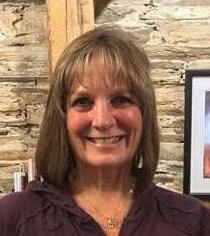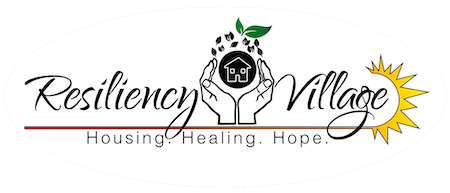“She calls out to the man on the street
He can see she’s been crying
She’s got blisters on the soles of her feet
She can’t walk, but she’s trying…”
— Phil Collins, Another Day in Paradise (1989)
 The concept for Resiliency Village started in a small room at the Jamestown Family Resource Center. Charts covered the walls, and on them, we scribbled our first conceptual drawings. Mark Dyken, Brenda Chapman, and I spent hours discussing how the “village” might look, how we might serve our unsheltered friends and neighbors, and how procedurally, things might fall into place. Now, nearly three years later, Resiliency Village is closing escrow on a piece of property that will become our home.
The concept for Resiliency Village started in a small room at the Jamestown Family Resource Center. Charts covered the walls, and on them, we scribbled our first conceptual drawings. Mark Dyken, Brenda Chapman, and I spent hours discussing how the “village” might look, how we might serve our unsheltered friends and neighbors, and how procedurally, things might fall into place. Now, nearly three years later, Resiliency Village is closing escrow on a piece of property that will become our home.
Throughout, we continue to learn and grow. Each experience brings knowledge and revises our perspective and renewed vision regarding how we will manage Resiliency Village. Each day broken stereotypes provide proof that change is possible. We gratefully acknowledge the smiles of people who once lived in camps and cars, happy now to have shelter, a daily shower, and ample food, allowing them to move forward in positive and productive ways. We talk to prospective villagers, many of them women who find themselves dealing with life in ways they never imagined. Perhaps homelessness came from an abusive marriage or relationship, health issues combined with the loss of jobs, a broken-down vehicle, depression, anxiety, and other matters beyond their control.
Recently, while trying to get help for one of our villagers, we were told it could take up to five years to find placement in a facility to help “tune-up” and manage her medications. This person was not a danger to herself or others, so she fell in the middle ground where services are limited and solutions uncertain.
In the United States of America, one in five adults has a mental illness. Nearly one in six Californians experience some mental illness.[1] Of course, mental illness is a broad term. One in four diagnoses is so severe it becomes difficult to function and left untreated, impacts the quality of life, and affects survival. Evidence of this shows up in our hospitals, schools, jails, and our homeless camps.
There are many speculations and substantiated documentation regarding the influx of homeless over the last fifty years. One explanation suggests the implementation of the Lanterman-Petris-Short Act in 1967 as a significant influence. This law, signed by Governor Ronald Reagan, was meant to end the inappropriate, inhumane, and often indefinite institutionalization of people with mental illnesses and developmental disabilities. It also provided patients with legal protections, such as rules limiting involuntary holds on people deemed a danger to themselves or others to 72 hours, better known as a 5150 hold. As important as this legislation was, it allowed for “cracks” in the system. This example proved to be the experience for the woman mentioned earlier. The help she needed was unavailable in a moment of crisis because she was not a threat to herself or others; thus, she fell into the veritable “systemic crack” and couldn’t climb out.
Though the statistics can feel overwhelming, we at Resiliency Village and so many others voluntarily tasked with this work in Tuolumne County recognize that homelessness encourages a vicious cycle—one from which it is hard to break free. We know that creating a space that is non-threatening and addressing basic needs like food insecurity, shelter, personal safety, education, transportation, and affordable medical care are crucial. As we near our grand opening, we pledge to meet our “villagers” where they are, provide the best trauma response possible, and serve our community responsibly.
The Residency Village Executive Team and Board of Directors often say we alone cannot manage our homeless crisis. Each of you is a piece of the solution. We thank you sincerely for all you do. Together, we can search for better answers, build bridges, and perhaps fill some gaps in our very broken system.
Shelly Muniz, Board Secretary
[1] Source: California Health Care Foundation, Collaborative Psychiatric Epidemiology Surveys, American Community Survey, charlesholzer.com
